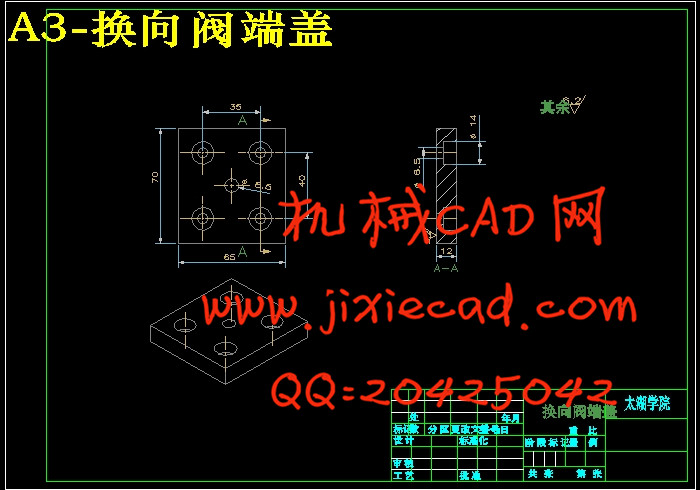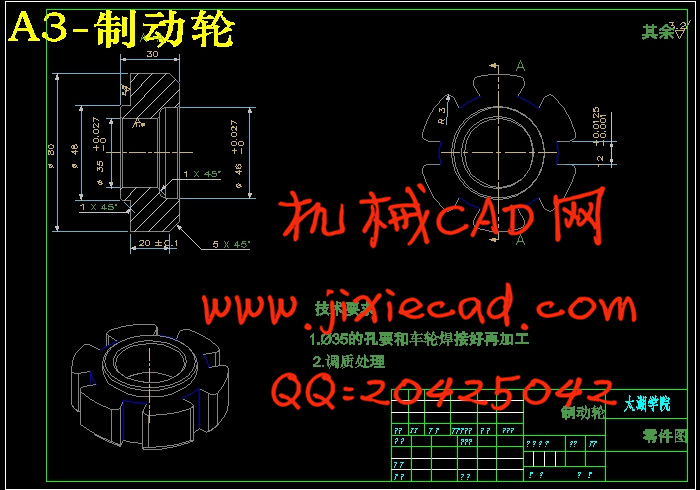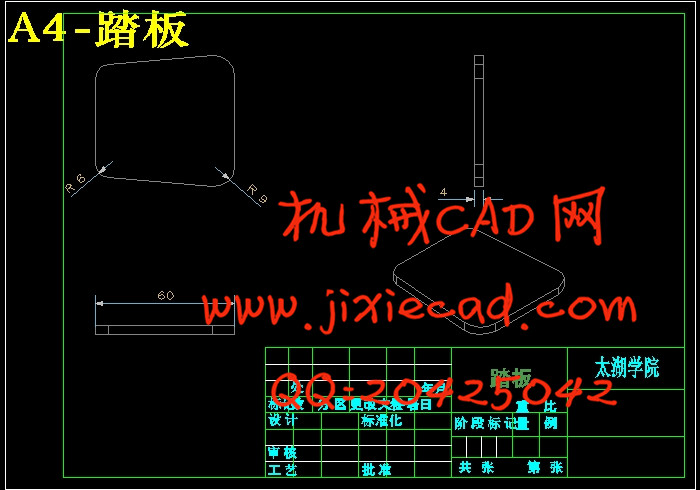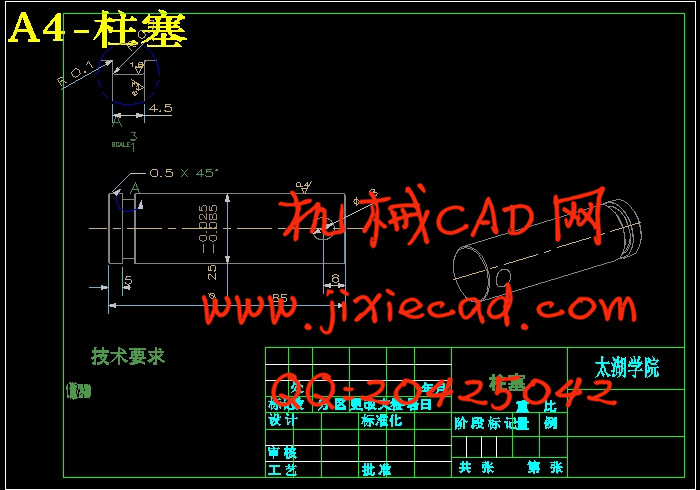设计简介
摘
我的课题是液压起重台车设计。设计该液压起重台车主要是用于及时更换机床工具,其特征是用车轮行驶,可制动,用脚进行液压提升和下降,承重500公斤,工作台高度可从660mm,调节到960mm。在设计过程中,对主要受力零件进行了强度、稳定性的分析及计算,使设计零件达到安全指标。并且对其中受力最大的零件——柱塞杆进行了有限元分析。该液压起重台车比起现代化的电动起重车显得极为落后,但本设计结构设计简单、合理,而且成本低廉、操作方便,是非常实用的一部运输工具。论文最后还对起重台车的工作原理进行了介绍,并附有使用和维护的说明。
关键词: 液压;强度计算;工作原理;液压系统
Abstract
My topic of The graduation project is the hydraulic pressure and hydraulic system design.
Designs this hydraulic pressure to get up the heavy trolley mainly issues in promptly to replace the engine bed tool, its characteristic is with the wheel travel, may apply the brake, carries on the hydraulic pressure promotion and the drop with the foot, the load-bearing 500kilograms, the work table highly may from 660mm, adjust 960mm. In the design process, has carried on the intensity to the main stress components, the stable analysis and the computation, enables the design components to achieve the security target. And has carried on the finite element analysis to stress biggest components - plunger rod. This hydraulic pressure gets up the heavy trolley to compare modernized the electrically operated derrick car to appear extremely falls behind, but this design structural design simple, reasonable,moreover the cost is inexpensive, the ease of operation, is extremely practical transport means. The paper finally also to got up the heavy trolley principle of work to carry on the introduction, and attached the explanation which used and maintains.
Key words: Hydraulic pressure;Strength calculation;Principle of work; The hydraulic system
目录
摘 要 IIIAbstract IV
目录 V
第一章 绪论 1
1.1国际起重市场分析 1
1.2起重机发展趋势 1
1.2.1发展超大型起重机 1
1.2.2迷你起重机大量涌现 2
1.2.3伸缩臂结构不断改变 3
1.3 液压系统的类型 3
1.3.1 液压系统的回路 3
第二章 原始数据及设计要求 5
2.1设计原始参数 5
2.2设计要求 5
第三章 强度及稳定性计算 7
3.1液压缸的设计 7
3.1.1确定液压缸的工作压力 7
3.1.2确定液压缸内径 7
3.1.3液压缸的壁厚和外径的计算 7
3.1.4缸筒变形的计算 8
3.2柱塞杆的强度计算 8
3.3塞杆稳定性计算 10
3.3.1无偏心载荷时的纵向弯曲极限力 10
3.3.2承受偏心载荷时的纵向弯曲极限力 11
3.3.3 活塞杆最大容许行程的计算 12
3.4脚踏泵的一些计算 13
3.4.1脚踏泵油箱所有油量的计算 13
3.4.2柱塞运动到最高处时,所需踏的次数 13
3.4.3小柱塞油泵所能产生的压力P2 14
3.4.4复位弹簧的一些参数计算 15
第四章 工作原理介绍 18
4.1液压工作原理图如下: 18
4.2 液压传动的工作原理 19
4.3高压油管的选择 19
4.4低压油管的选择 19
4.5低压油管接头的选择 19
4.6油箱的选择 20
第五章 液压系统的使用和维护 22
5.1液压油的选择及使用 22
5.2维护注意事项 24
5.3液压系统的发热验算 24
第六章 UG有限元分析 25
6.1 目的 25
6.2 三维实体造型 25
6.3 有限元分析 27
第七章 结论 32
致谢 33
参考文献 34










